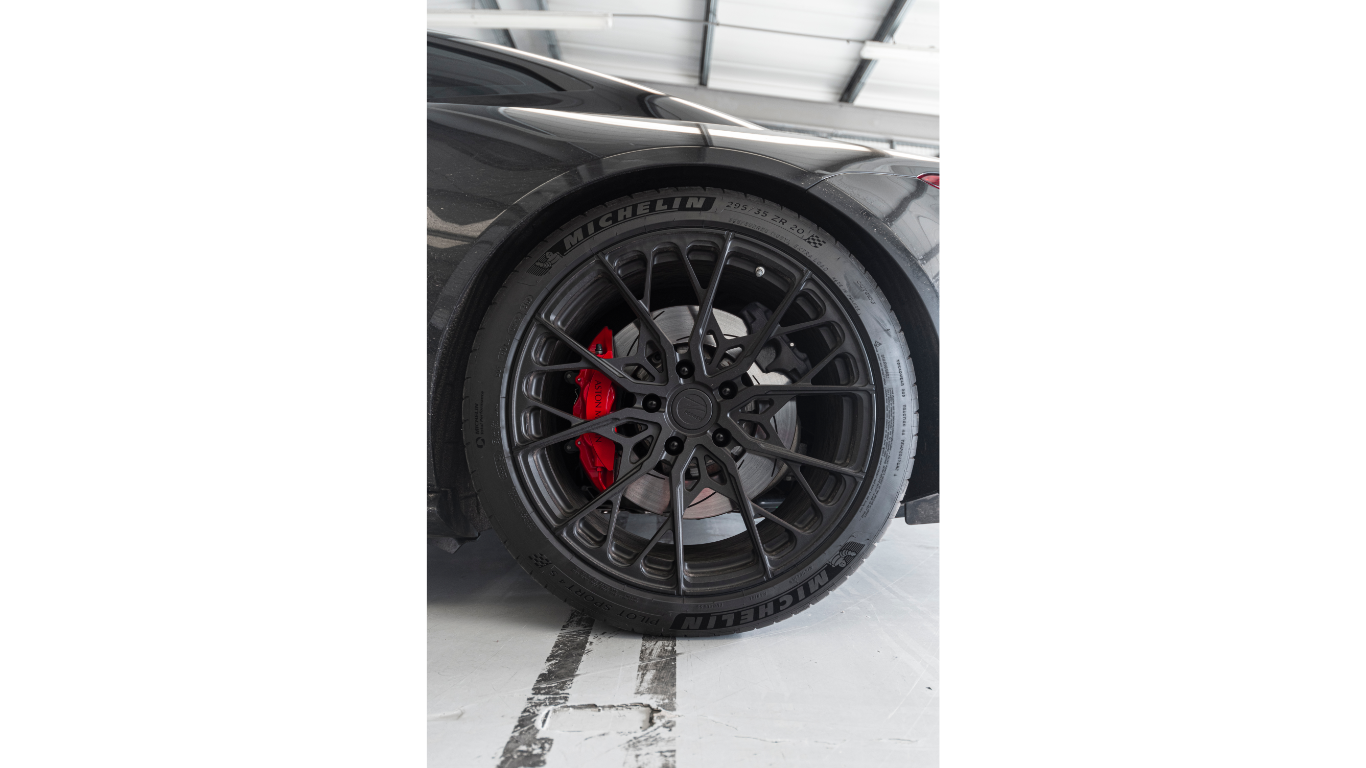Tire Load Index – What Does It Mean?
October 19, 2022
Tires

If you’re like most people, you probably don’t know much about your car tires. But did you know that there’s a number on the side of each tire that can tell you a lot about its capabilities? That number is the Tire Load Index.
What is the Tire Load Index?
The tire load index is a numerical code on a tire’s sidewall that provides information about how much weight the tire can safely carry. This code is important because it helps you choose the right tires for your vehicle. The tire load index rating is determined by the tire’s manufacturer and is based on the tire’s maximum load-carrying capacity.
What is a car tire?
A car tire is a type of tire that is designed for use on a passenger car. They are typically made from a rubber compound and have a tread pattern that is designed to provide good grip and traction on the road. Most car tires also have a steel or Kevlar bead that helps to keep the tire on the wheel rim.
What is the tire speed rating?
The speed rating of a tire is the maximum speed that the tire can safely maintain over a long period of time. The rating is based on laboratory tests and not on actual road conditions. The speed rating is represented by a letter, which you can find on the sidewall of the tire.
Here is a breakdown of the various speed ratings:
-L: Up to 75 mph
-M: Up to 81 mph
-N: Up to 87 mph
-P: Up to 93 mph
-Q: Up to 99 mph
-R: Up to 106 mph
-S: Up to 112 mph
-T: Up to 118 mph
-U: Up to 124 mph
-H: Up to 130 mph
-V: Up to 149 mph
-W: Up to 168 mph
What is the tire load index rating?
The tire load index is a numerical code listed on every passenger car tire. It indicates how much weight the tire can safely carry. The load index should not be confused with the speed rating, although both are required by law to be printed on the sidewall of every passenger car tire sold in the United States.
A load index is a number from 0 to 279. A higher number indicates a greater load-carrying capacity. For example, a tire with a load index of 95 can carry 1,477 pounds at its maximum inflation pressure.
The speed rating is a letter from “A” to “Y” that indicates the maximum speed at which a tire can carry its maximum load. For example, a “Y” speed rating means the tire can travel at 186 mph carrying its maximum load.
Tires with higher load indices and speed ratings usually cost more than tires with lower ratings because they are made of tougher materials and are constructed to withstand higher speeds and loads.
How to Read Tire Load Index?
A tire’s load index is a measurement of how much weight the tire can safely carry. The higher the tire’s load index number, the greater its load-carrying capacity. The load index is usually located in the tire size information moulded into the sidewall of the tire. The load index for a particular tire is matched with the maximum load-carrying capacity for that tire’s size.
Most new cars come equipped with tires that have a load index of 91 or higher. The load index is a numeric code associated with the maximum weight that a tire can support when properly inflated. The higher the load index number, the greater the load-carrying capacity of the tire.
The load index is not used alone. It is always followed by a letter, which represents the speed rating of the tire. The speed rating tells you the maximum speed at which a tire can carry a load under specified service conditions — most likely, your car’s speed when fully loaded.
Here’s how to interpret the load index and speed rating on your tires:
91 = 1,389 pounds
92 = 1,433 pounds
93 = 1,477 pounds
94 = 1,521 pounds
95 = 1,565 pounds
96 = 1, 610 pounds
97 = 1, 661 pounds
98 = 1,717 pounds
99 = 1,781 pounds
What do the numbers mean?
The load index is a numerical code associated with the maximum weight that a tire can support when properly inflated. Most passenger car tires range in load index from 71 (the lowest-rated tire) to up to 110 (the highest-rated tire).
The first step in understanding the load index is to know that it is not a measure of how much weight the tire can actually hold. The load index only indicates the maximum amount of weight that a tire can support when it is properly inflated and under normal operating conditions.
It is important to note that the load index should not be used as the sole criterion when selecting a tire. In addition to the load index, vehicles have specific speed ratings (expressed as a letter) which indicate the maximum speed capability of the tires.
What is the Importance of a Tire Load Index?
The load index on a passenger car tire is a numerical code stipulated by the tire manufacturer and represents the maximum load in kilograms that the tire can support safely. The load index rating is related to the tire’s load-carrying capacity. Understanding a tire’s load index is important when shopping for new tires. Otherwise, a driver runs the risk of purchasing tires that can’t support the weight of their vehicle, which can lead to blowouts and other dangerous situations.
Why is the tire load index important?
A tire load index is a number that corresponds to the maximum amount of weight that a tire can support. The higher the tire load index, the greater the weight capacity of the tire. The load index is part of the tire size designation and can be found on the sidewall of the tire, following the letters “LT” (for Light Truck tires) or “P” (for Passenger Car tires).
Tire manufacturers use a variety of test methods to determine the load-carrying capacity of their tires. The common goal is to produce a durable product that can support the estimated loads for which it was designed.
There are two main reasons why it is important to choose a tire with an appropriate load index for your vehicle: safety and durability.
Safety: The primary reason for having tires with an appropriate load index is safety. Tires that are not rated to support the weight of your vehicle may fail while you are driving, leading to a potentially dangerous situation.
Durability: Tires with a higher load index will usually last longer than those with a lower load index because they are designed to carry heavier loads. This does not mean that you should always choose the tire with the highest load index; other factors such as speed rating and price should also be considered.
What are the benefits of having a high tire load index?
A tire’s load index is a measurement of how much weight the tire can safely carry. The higher the load index number, the greater the load-carrying capacity of the tire.
The tire load index is important because it helps to ensure that your tires can support the weight of your vehicle, including all passengers and cargo. If you have a vehicle with a high curb weight or you frequently transport heavy loads, you will need tires with a high load index.
It’s important to note that the load index is not the same as the tire’s speed rating. The speed rating indicates how fast a tire can safely travel, while the load index tells you how much weight the tire can support.
When shopping for new tires, be sure to check both the load index and speed rating to make sure you’re getting tires that are suitable for your vehicle and driving habits.
How to Choose the Right Tire Load Index for Your Car?
One of the most important aspects of choosing the right car tires is to make sure they can support the weight of your car, and that’s where the tire load index comes in. The load index is a numerical code on the sidewall of every tire that indicates how much weight that tire can safely carry.
How to choose the right tire load index for your car?
There are a few things you need to take into account when shopping for car tires, and the load index is one of them. This number indicates how much weight each tire can support.
The load index is represented by a two-digit number, which you can find on the sidewall of the tire. It ranges from 70 (the lowest rating) to 169 (the highest rating).
For example, a tire with a load index of 90 can support 1,323 pounds, while a tire with a load index of 120 can support 2,205 pounds.
The correct load index for your car depends on the manufacturer’s recommendations and the weight of your vehicle. You can usually find this information in the owner’s manual.
If you’re not sure which load index to choose, you can always consult a professional at a tire shop. They will help you pick the right tires for your car.
What factors should you consider when looking for tires?
There are three things you need to consider when looking for tires:
-Tire speed rating
-Tire load index
-Tire type.
The speed rating is the maximum speed a tire can safely maintain over a long period of time. A load index is a number that corresponds to the maximum weight the tire can carry safely. The type is what kind of terrain or conditions the tire is designed for.
To find the right tires for your car, you need to know the size, speed rating, and load index of your current tires. You can find this information on the sidewall of your tires. Once you have this information, you can use it to find tires that will fit your car and meet your needs.
Back

